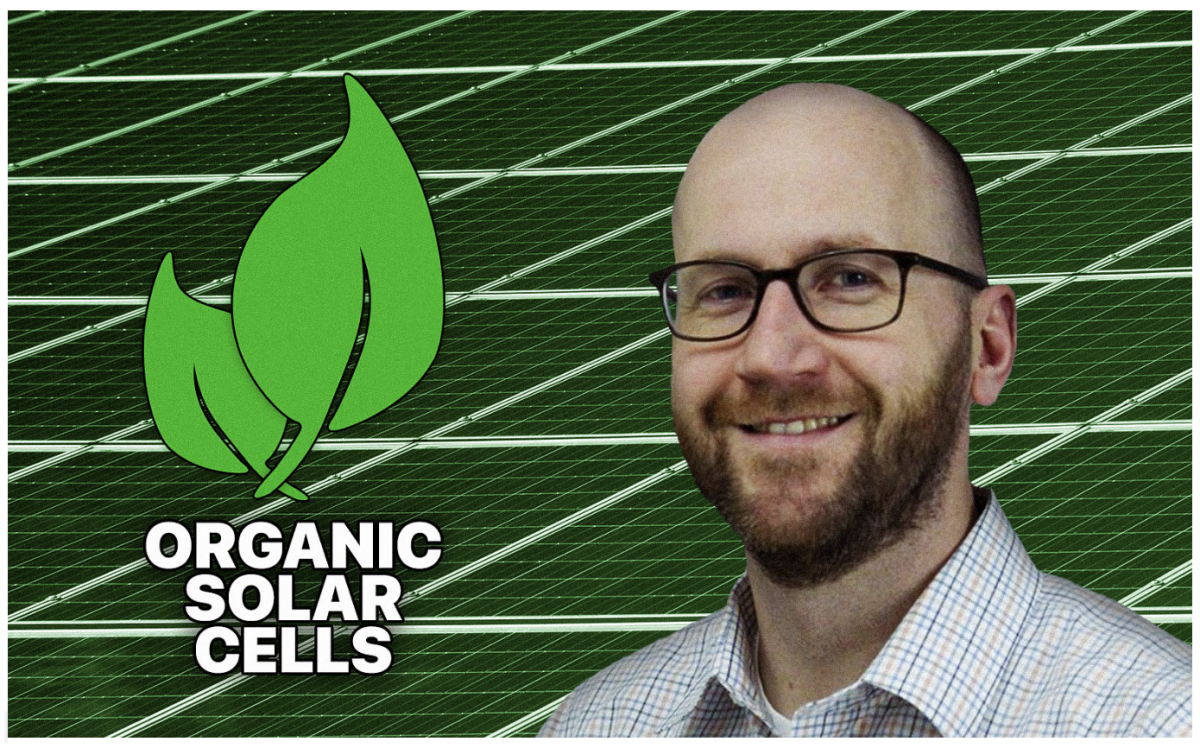In every department and every building, there’s always research happening on NC State’s campus. Dr. Brendan O’Connor, professor in mechanical and aerospace engineering is currently performing research on the development and implementation of organic solar cells.
In the ongoing quest for clean and sustainable energy sources, researchers have made significant progress in the field of organic solar cells.
Harry Schrickx, a mechanical engineering Ph.D. student who has been working with Dr. O’Connor for several years, said organic solar cells are different from traditional solar cells.
“Basically, with an organic solar cell, you are replacing that silicon semiconductor with an organic semiconductor, but on a basic level, the idea is the same,” Schrickx said. “Light goes in, gets absorbed, and you get out a flow of electrons to generate power.”
One of the main advantages of organic solar cells is their flexibility. They can be manufactured in a variety of shapes and sizes, making them suitable for a range of applications.
Matthew O’Connell, a graduate student in mechanical engineering in Dr. O’Connor’s research group, said organic solar cells will be ground-breaking due to their versatility.
“Because of their materials and how they are characterized, they can be flexible so a whole new avenue of applications [can be opened up],” O’Connell said. “So imagine cars wrapped in solar panels… so instead of plugging into the grid, you had solar cells powering your car.”
Another advantage is their low cost of production. This makes them an attractive alternative for countries and communities where access to electricity is limited and where traditional energy sources are too expensive.
Despite their advantages, organic solar cells still face some challenges. Their energy conversion efficiency is lower compared to silicon solar cells, and their lifespan is shorter. Much of the research is going into finding an organic encapsulation for the solar cell that will make it less fragile and increase its lifespan. Without encapsulation, direct light, moisture and even air can break the solar cell.
O’Connor said it was important to focus time, money and manpower on creating organic solar cells from the ground up despite the fact that silicon solar cells already have a better energy conversion efficiency and are less fragile.
“We aren’t competing with silicon [solar cells],” O’Connor said. “We are looking for applications where silicon does not excel.”
Although the inherent job of an organic solar cell is the same as one that is silicon based, the materials they are made out of are so different it wouldn’t really be fair to compare them to each other.
“[Organic solar cells] have much more flexibility and have a higher rated power-per-pound … but you don’t really care about that if you have a rigid field of silicon modules, that’s not the goal,” O’Connor said.
O’Connell said it felt like it took a lot of effort to find a research group as niche as organic solar cell research at NC State and that the University should be promoting more of these research opportunities in renewable energy development.
O’Connor said having the motivation of wanting to combat the effects of climate change with research like organic solar cells is a good motivation, but a liking of the technical science behind an organic solar cell is what gets you through the day to day.
For now, much of the organic solar cell work will be in the lab, but O’Connor said commercialization of such products is not too far in the future. Together with Harald Ade, a professor in the physics department, O’Connor has started PolyPV, a company seeking to take steps towards commercialization.
“Me and Dr. Harald Ade started a company to commercialize these solar cells with the goal of making them flexible for things like tents and recreational equipment, so be on the lookout for future commercial products to go camping with your solar-powered equipment,” O’Connor said.
Organic solar cells have only been around for the past 30 years, but in the past five years have made incredible progress toward being a viable solar energy product. This innovativeness represents a modern scientific approach to tackling renewable energy issues by advancing the possibility of commercial goods being powered by organic materials.








